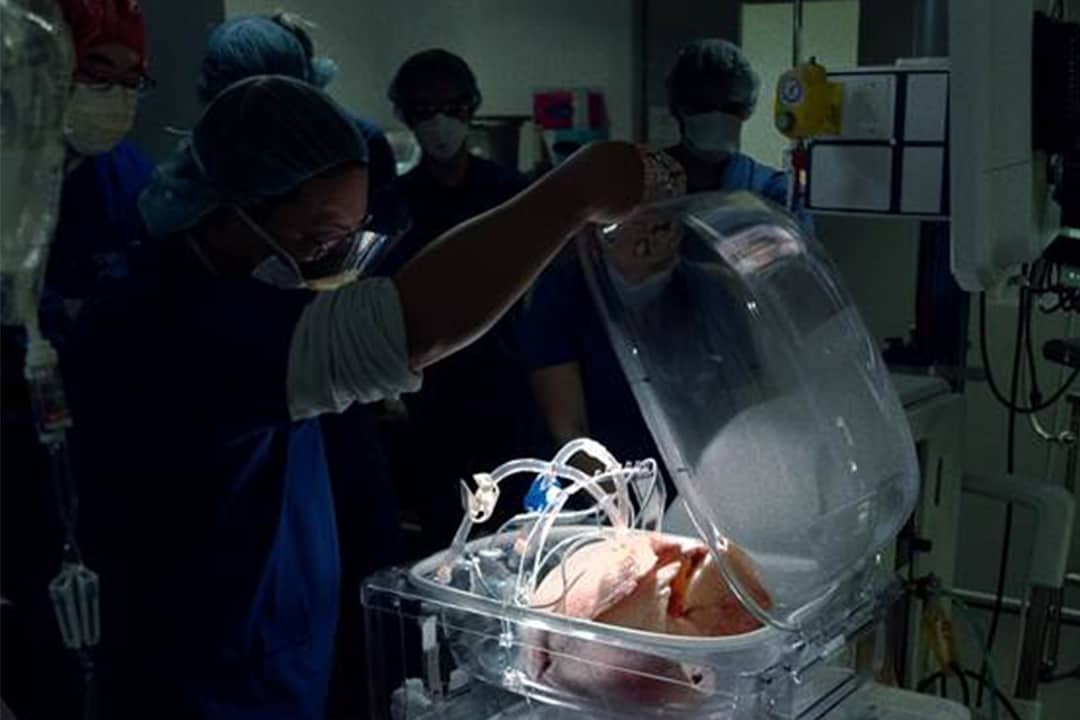Apart from giving us both amusing and concerning responses — sometimes simultaneously — ChatGPT has jolted us awake from our artificial intelligence-ignorant slumbers. We’re now aware of how powerful large language models, like ChatGPT, can be — but what about artificial intelligence (AI) in healthcare?
U of T scientists have been innovating using AI in their research for several years and have created models that may help improve lung transplantation outcomes by predicting outcomes in patients following bypass surgery, among more applications.
Lung transplant decision-making made easier
Researchers at U of T, the University Health Network (UHN), and the Vector Institute for Artificial Intelligence recently developed an AI model to aid transplant surgeons and personnel in making decisions about lung transplants.
The development of this model was advanced by an earlier innovation by UHN scientists called the ex-vivo lung perfusion system (EVLP). The EVLP allows scientists to maintain a lung in normal physiological conditions by providing it with the right temperature and nutrients while keeping it breathing using a ventilator. This increases the amount of time a lung can be preserved outside of the body.
However, isolating the lung in the EVLP system has another benefit, too. “[Studying an organ on its own] gives us access to data that really doesn’t have any parallel in the rest of medicine. We know that any signal we see… came from the lung; we know that any data coming off the ventilator is only being driven by the lung itself,” said Andrew T. Sage, Assistant Scientist with the Toronto Lung Transplant Program at the Toronto General Hospital Research Institute, in an interview with The Varsity.
The EVLP provides a range of data points, including, but not limited to, pressure, acidity, and images of the lung.
Sage and colleagues trained an AI model — InsighTx, pronounced “insight” — on these data points gathered from transplants performed at Toronto General Hospital. They were then able to “categorize lungs that are ultimately unsuitable [for transfer], lungs that are really likely to do well, and lungs that [require physicians to] proceed with caution,” continued Sage in the interview.
InsighTx has provided a more quantitative way of assessing whether a lung is suitable for an organ transfer and improves physician confidence. While InsighTx isn’t yet in the clinic, it’s well on its way. Currently, the InsighTx team is formally assessing its use in-clinic. They’re working with clinicians to study how the model’s use may change organ utilization and patient outcomes.
As for the future of lung transplants, “you’ll see really significant advances in organ transport, as well as organ transplant… very soon,” said Sage. Currently, the EVLP functions as a mobile cart. But in the future, Sage said, we might start to see “smart carts” — “a generation of these ex-vivo carts, [where] everything that you’re doing is being analyzed and [the cart is] telling the surgeon what they’re seeing, as well as what they expect to see in the future,” Sage explained.
Predicting patient outcomes before and after surgery
Scientists at U of T, Unity Health Toronto, and UHN, alongside researchers from Ireland and Saudi Arabia, recently developed an AI model that predicts how an infrainguinal bypass patient will fare. Patients who suffer from severe infrainguinal peripheral arterial disease — where a narrowing of blood vessels in the legs impairs blood circulation — may require a bypass of their blood vessels, by creating a detour for the blood to get around an obstacle, to alleviate this narrowing.
This procedure, called an infrainguinal bypass, has a high risk of complications and physicians lack predictive tools to assess their patients’ risks. The model predicts patient outcomes after this bypass surgery to allow physicians to assess and manage their patients’ risks prior to the operation — and choose a different treatment path if needed. It can also alert physicians of high-risk patients following the bypass.
The future: “Smart carts,” drones, AI assistants, and concerns
A 2022 survey of Canadian vascular surgeons found that a majority of physicians were excited about AI’s use in surgery, but 50 per cent said they had a poor knowledge of AI. Closing this gap means better AI education for clinicians, including those at U of T.
“We [at the Temerty Centre for Artificial Intelligence Research and Education in Medicine (T-CAIREM)] work closely with educators and clinicians,” said Muhammad Mamdani, Director of T-CAIREM and co-author of the infrainguinal bypass study in an interview with The Varsity. “There are now a couple of sessions on AI in the medical school curriculum,” they added.
While researchers can look at what data a model is using more or less heavily to generate its output, the exact mechanism the model is using may not be clear to them. This is important in a research context but less so in the clinic, explained Mamdani. “We do things in healthcare all the time that we don’t understand. To get a head CT, for example, I don’t need to know how the CT machine works. But I need to know what the output is,” continued Mamdani in the interview.
Mamdani sees AI advancing healthcare in four main ways: automating administrative tasks, “[making] clinical decisions better and faster,” more accurately predicting patient outcomes, and helping patients with less complex medical problems — though physicians would have to step in when needed.
AI is already in the clinic and it will soon be even more widespread. Toronto scientists are playing a big role in what may become the next revolution in medicine.



No comments to display.